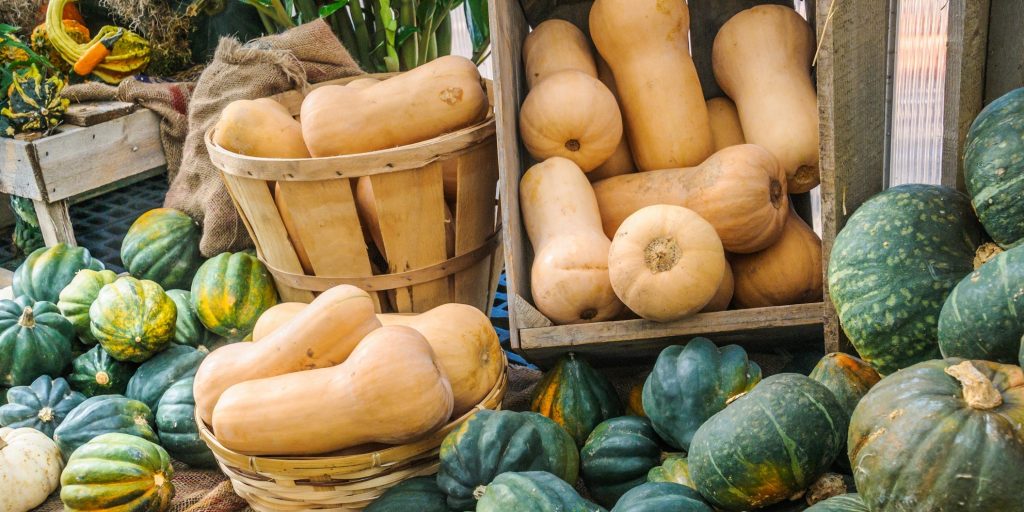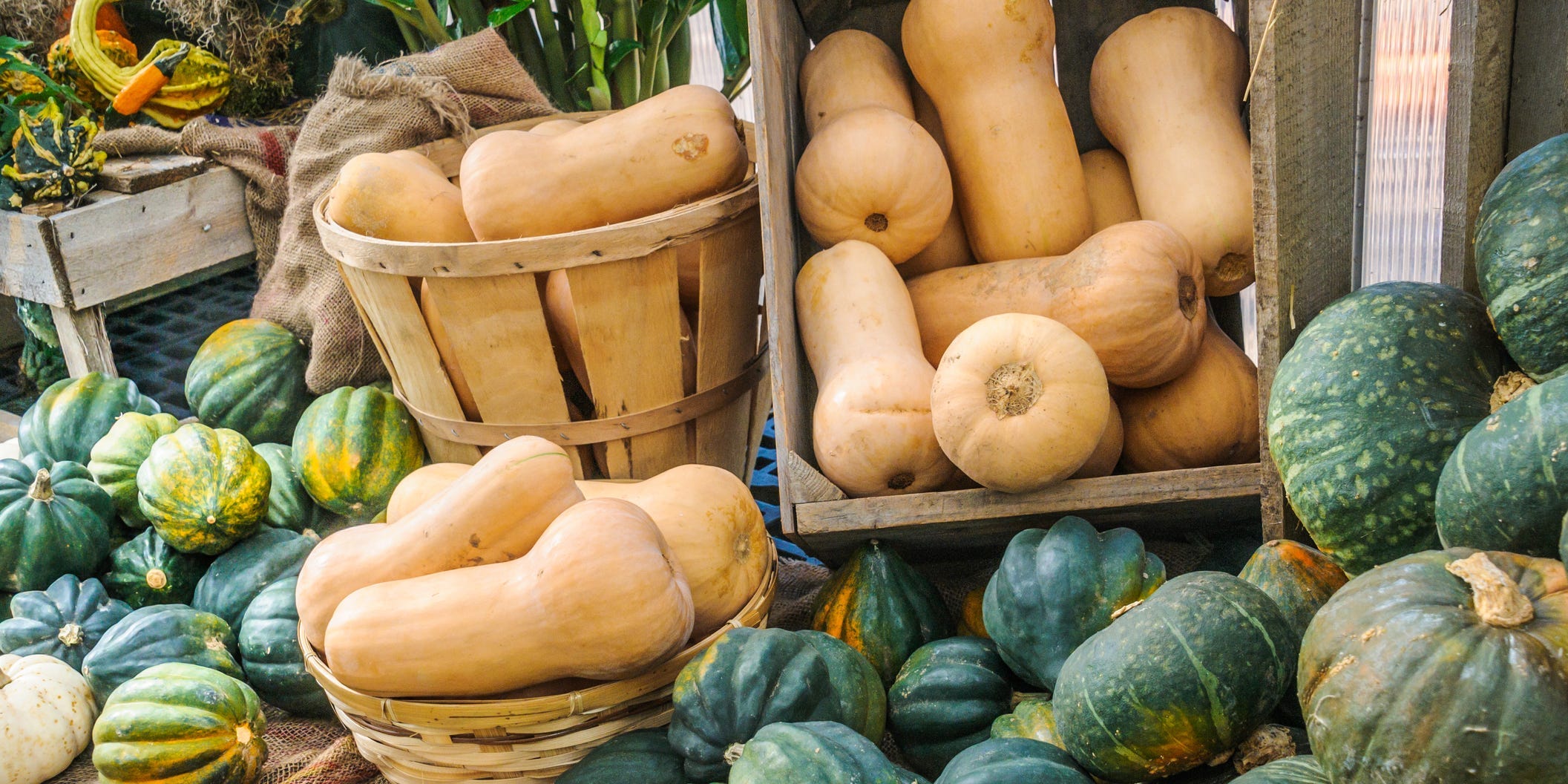
KenWiedemann/Getty Images
- Squash can be divided into two major categories – summer and winter squash.
- Summer squash have thin skins, while winter squash have hard shells.
- Roasting, puréeing for soup, slicing raw, and searing are common preparations for squash.
- Visit Insider's Home & Kitchen Reference library for more stories.
Pumpkins may have stolen the show in fairy tales and autumn landscapes across America, but there are so many different kinds of squash available all year, from familiar zucchini and butternut squash to more exotic varieties like tromboncino, red kuri, and crooked neck squash. The different shapes, colors, and sizes can be daunting if you aren't familiar.
Chef Noah Zamler of The Press Room in Chicago grew up vegetarian and says squash was always on the menu at his house around Thanksgiving and the holidays. "I love squash because it is a bountiful and versatile vegetable," he says. "It brings back a lot of great memories." Zamler says Delicata squash is his favorite winter squash and he even grows summer squash in his backyard. Here, he shares his cooking tips with us for all kinds of squash.
Winter squash vs. summer squash
The biggest difference between winter and summer squash aside from their growing season is in the skin. Summer squash is soft-skinned while winter squashes have a hard shell that is not edible.
"Summer squash is usually planted after the last frost, and can be harvested as early as June," Zamler says. "Winter squash starts around September or August, can grow throughout the winter if kept covered, and usually takes much longer on the vine to mature."
What is a gourd?
Gourds are any fruit with a hard shell in the family Cucurbitaceae, so summer squash would not be gourds, but winter squashes could all be considered gourds.
Types of winter squash
Acorn squash

HadelProductions/Getty Images
Acorn squash is frequently eaten roasted or stuffed. At The Press Room, Zamler serves stuffed acorn squash with celery root, mushrooms, olives, and feta.
Delicata squash
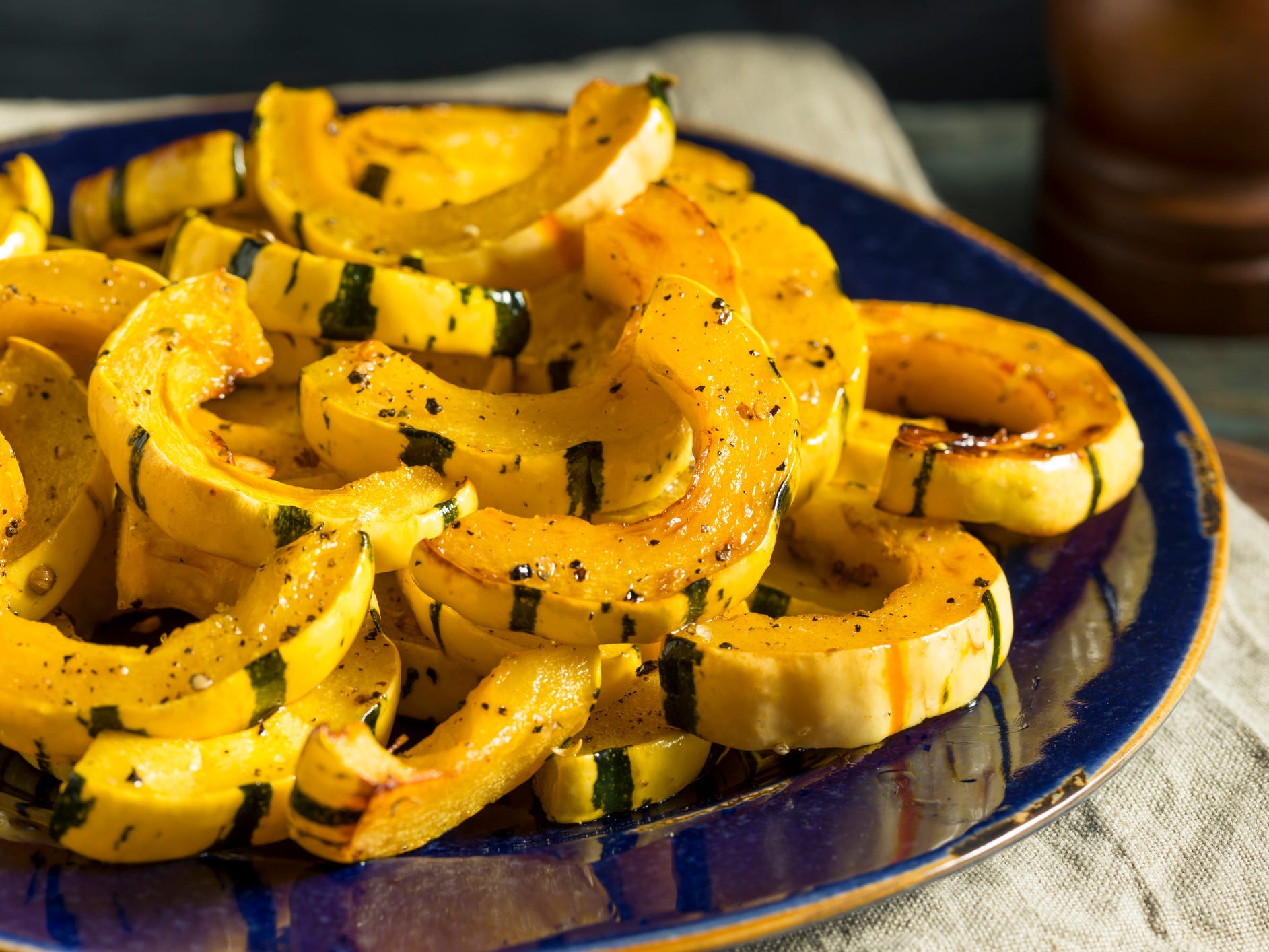
bhofack2/Getty Images
Like its name suggests, delicata squash has a delicate flavor. It's most often steamed or roasted. At The Press Room, Zamler uses delicata squash to complement scallops. "Since they have a lighter flavor, they aren't too overpowering next to a delicate scallop," he says.
Butternut squash
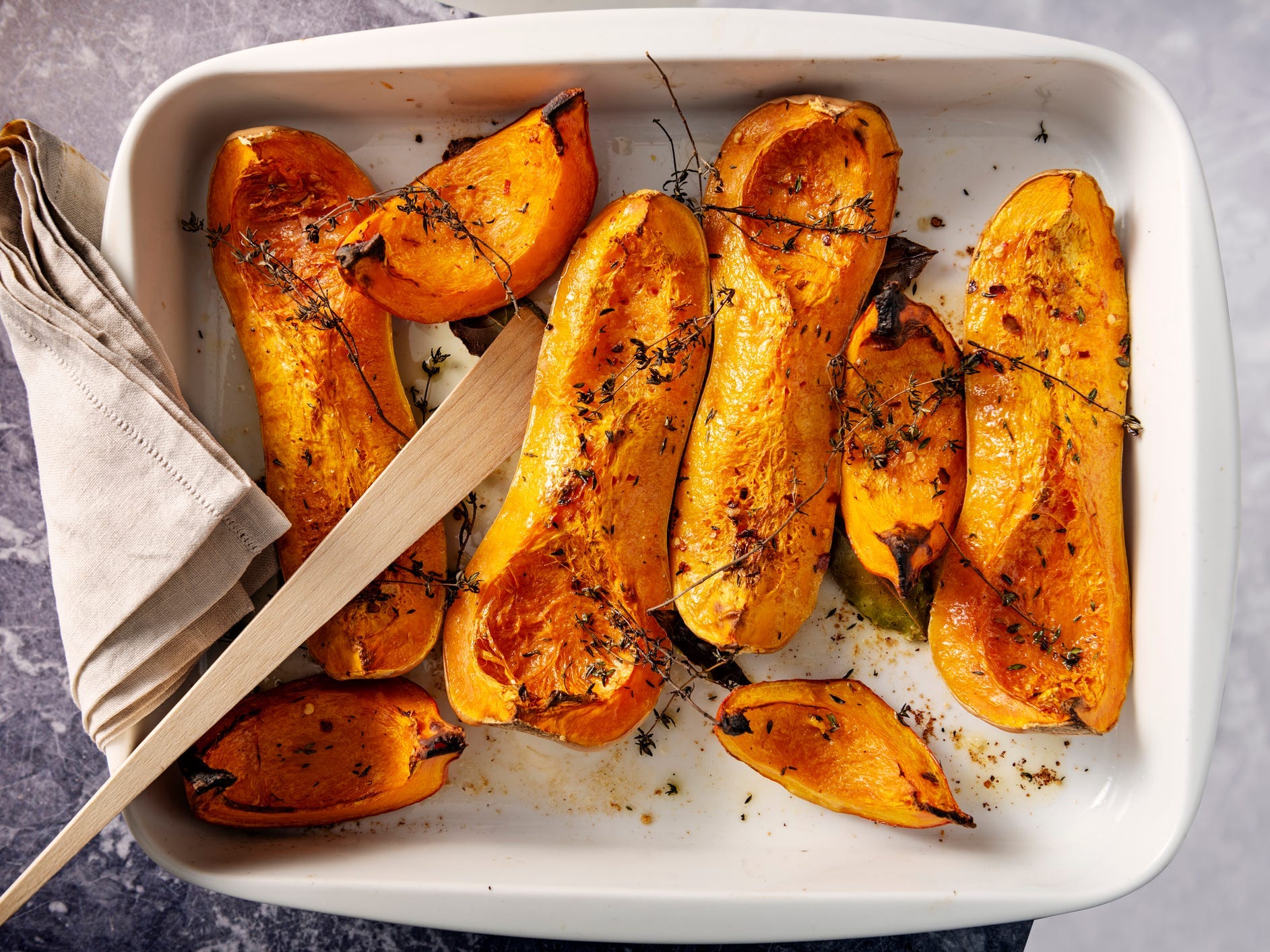
ClarkandCompany/Getty Images
One of the most versatile squashes, butternuts can be used for almost anything, according to Zamler. It's often transformed into ravioli filling, soup, or even sauce for vegan mac and cheese. It's a relatively large squash with a high starch content but still tender enough to be eaten roasted. However, the skin is generally too tough to eat.
Kabocha squash
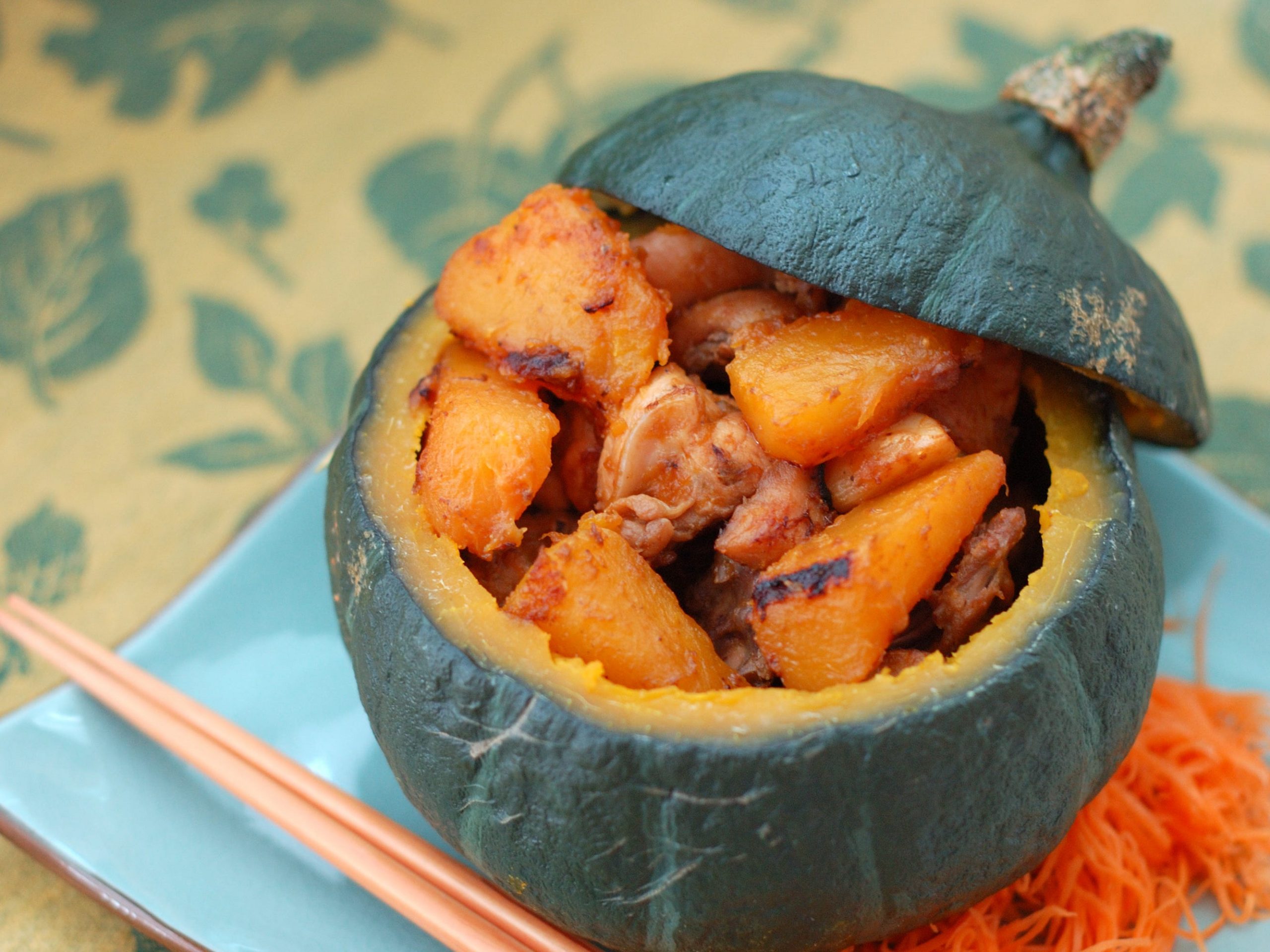
dapan photography/Getty Images
Kabocha is a Japanese squash with a concentrated flavor of what we commonly recognize as pumpkin. "Kabocha is a smaller squash, so the skin is edible as well as the fruit," Zamler says. "Kabocha shines on its own or is great with heavier sauces like hoisin or a glaze."
Spaghetti squash
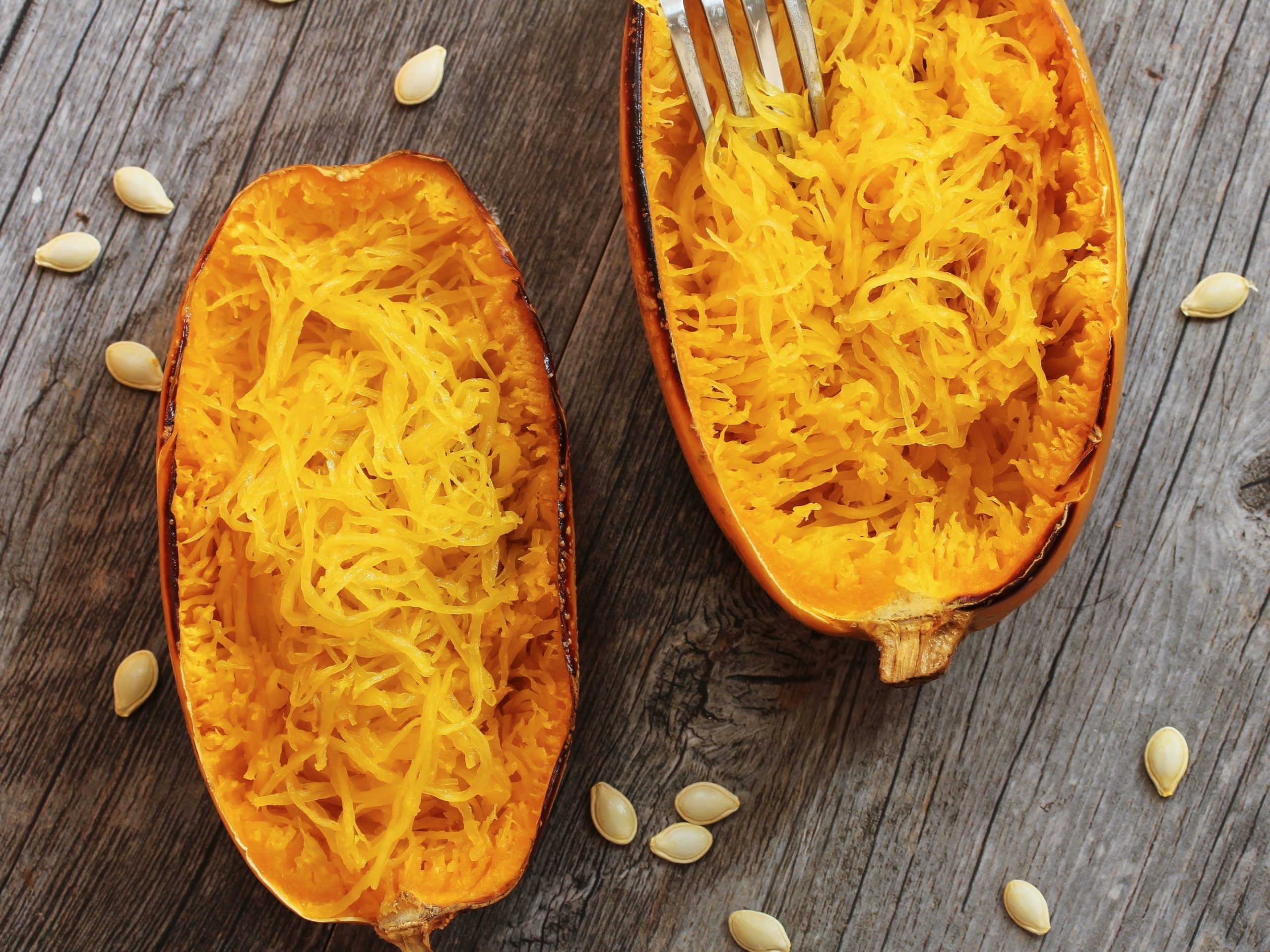
vm2002/Getty Images
Because spaghetti squash is so fibrous, it's almost exclusively roasted and then shredded. "When cooked this way the squash only needs a few ingredients to really shine," Zamler says. "A little butter and salt and spaghetti squash is ready to go."
Blue Hubbard squash
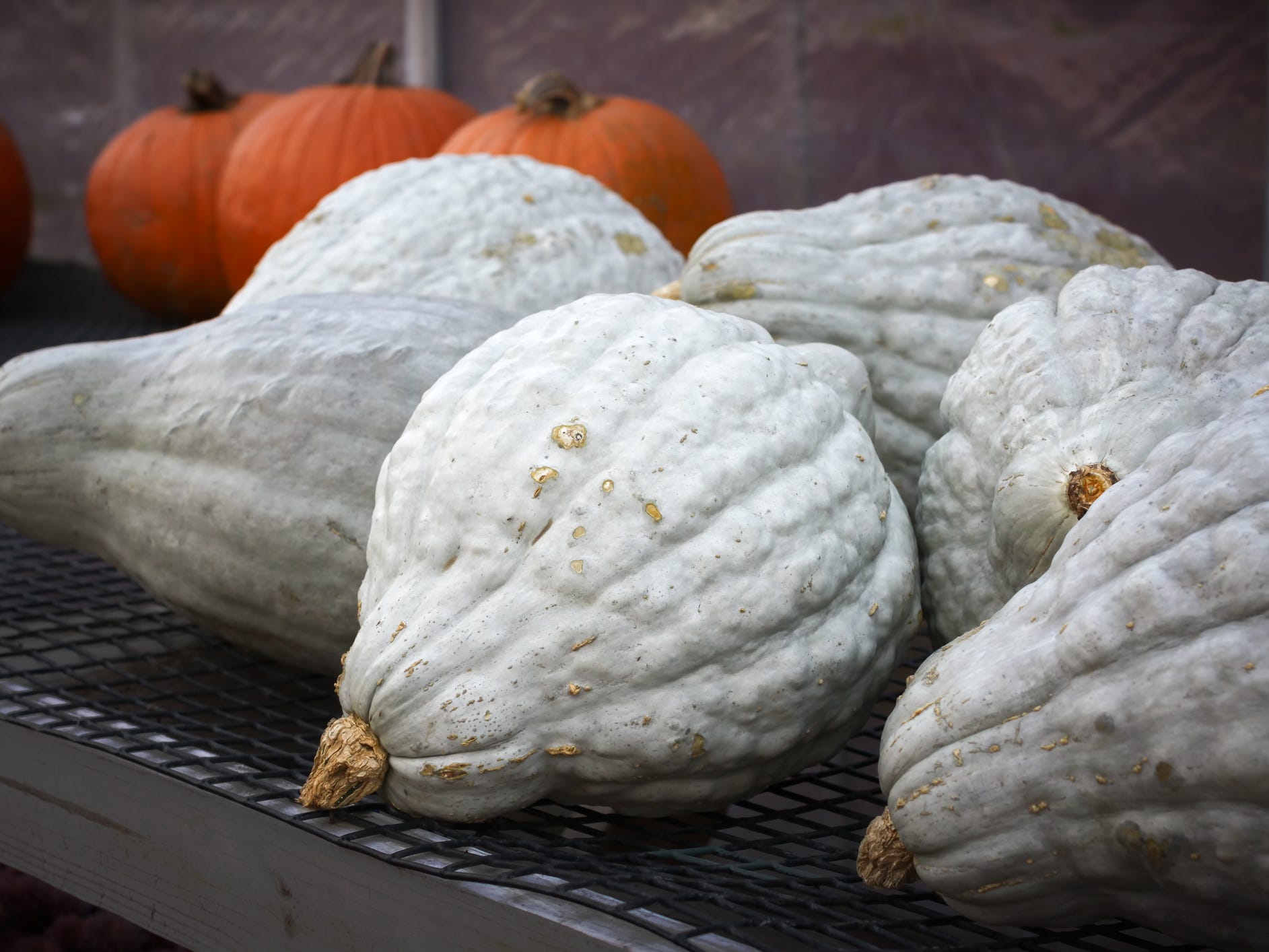
EvergreenPlanet/Getty Images
Blue Hubbard squash are grown in the US and are very high in starch, which makes this squash ideal for roasting or being puréed into soup.
Red kuri squash
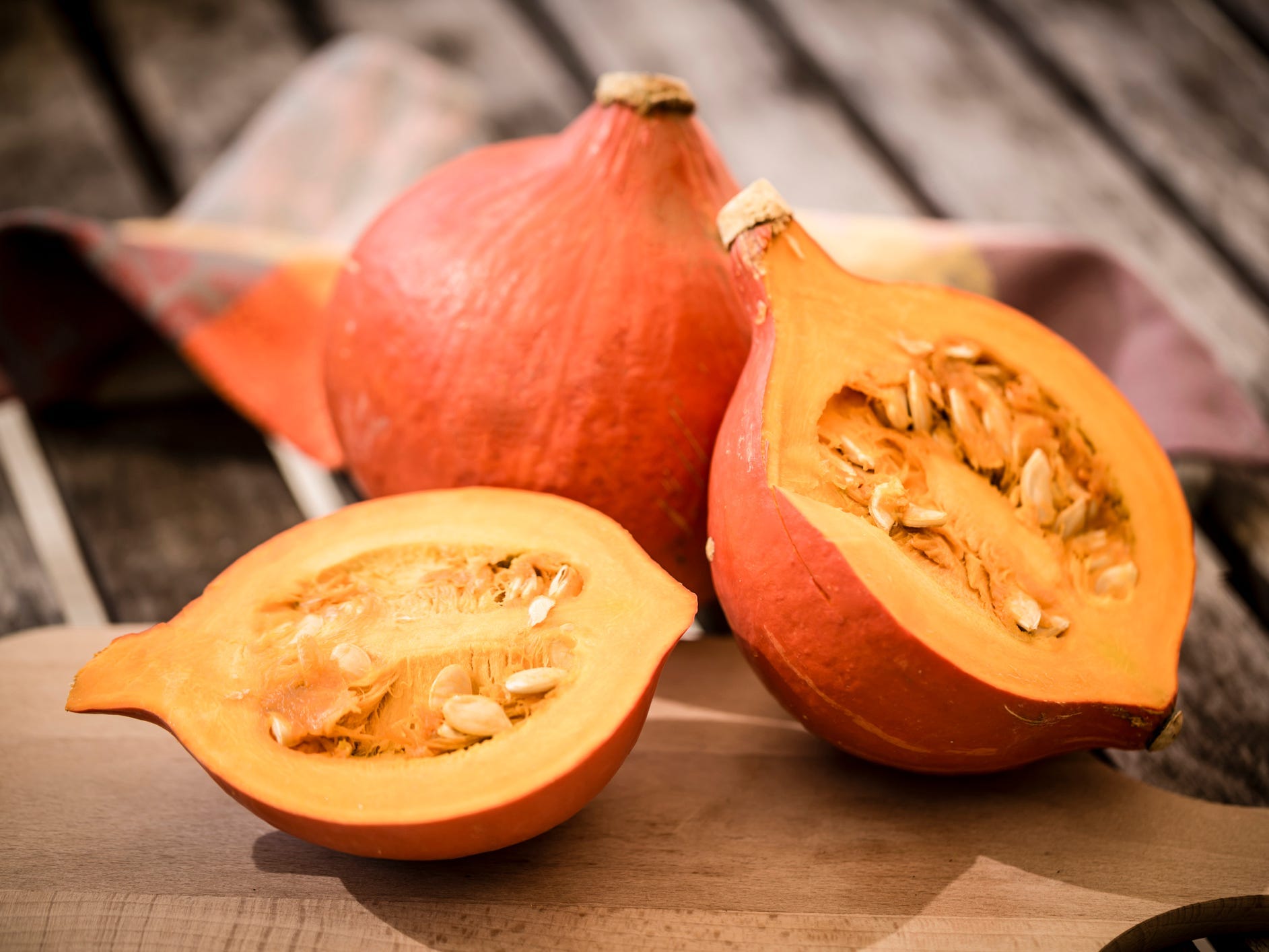
Westend61/Getty Images
Red kuri squash is a Japanese squash. Kuri in Japanese means "chestnut," and it's so named because of its shape and nutty flavor. Red kuri squash is great in a purée or roasted and seared.
Pink banana squash

HaraldBiebel/Getty Images
Pink banana squash is a South American squash that can weigh up to 40 pounds. The interior texture is very creamy and starchy, which means this squash is not great for roasting. Instead, it should be puréed before consuming.
Pumpkin
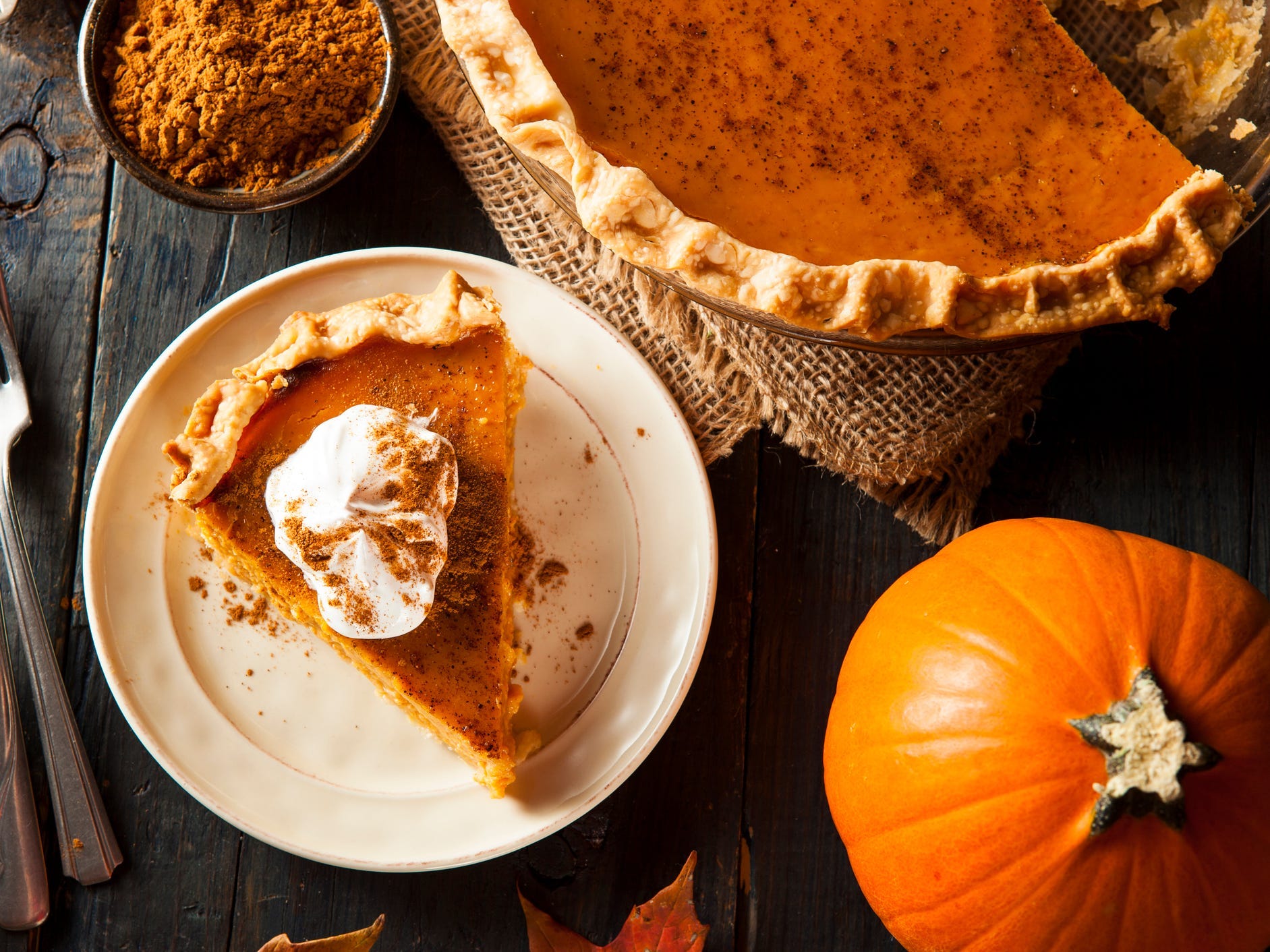
bhofack2/Getty Images
Pumpkins are grown all throughout the world, and in the United States, they are used for carving, roasting, and baking. Pumpkin can be a general term to describe a variety of gourds. Edible pumpkins are often smaller and labeled as sugar pumpkins in the grocery store.
Honeynut squash
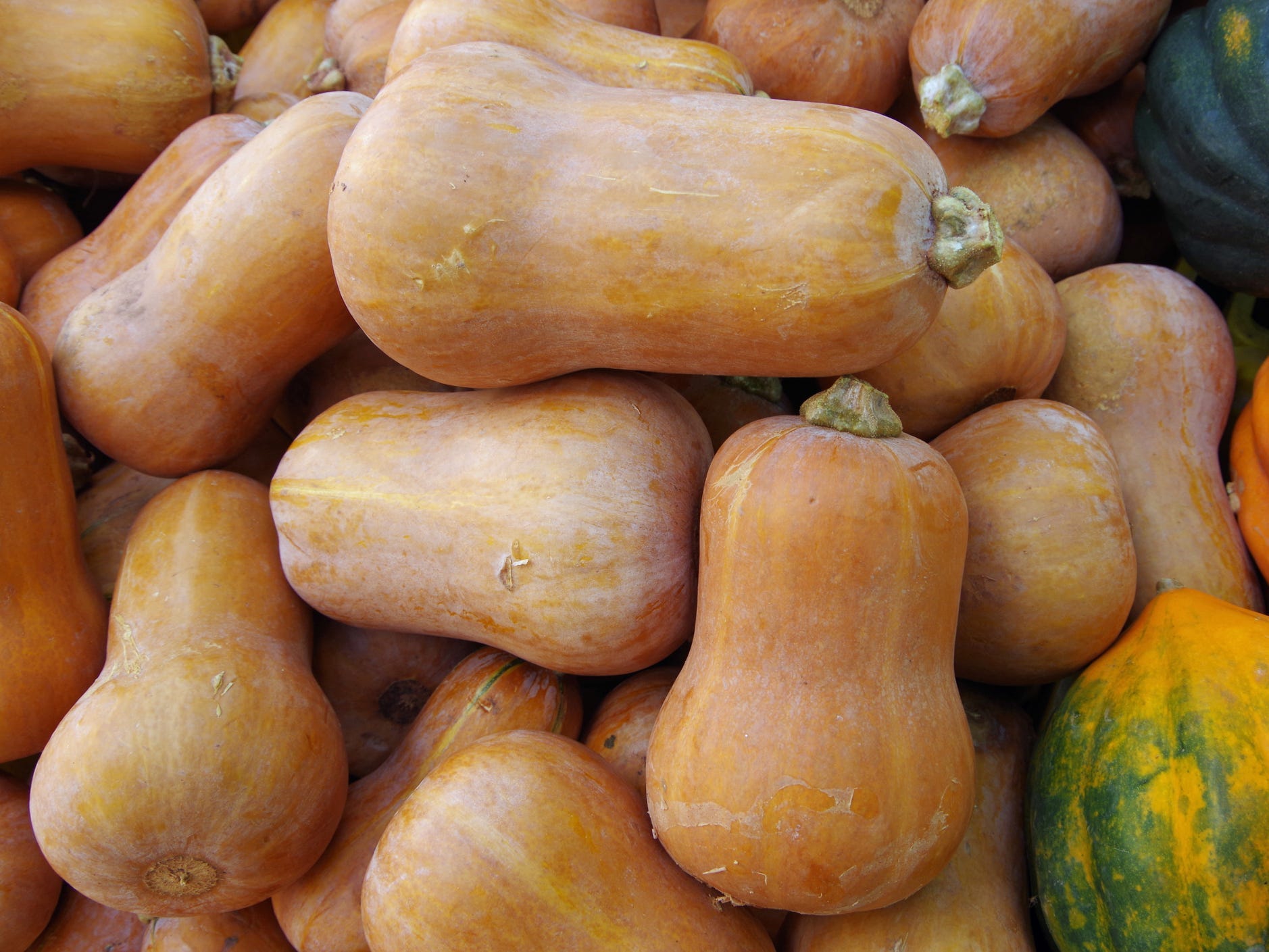
PaulPellegrino/Getty Images
This is a genetically modified butternut squash that was made smaller, with a more concentrated flavor and higher vitamin content than a traditional butternut. Plant breeders have also developed an even smaller version called the 898 squash, which is said to have an even longer shelf life.
Types of summer squash
Zucchini
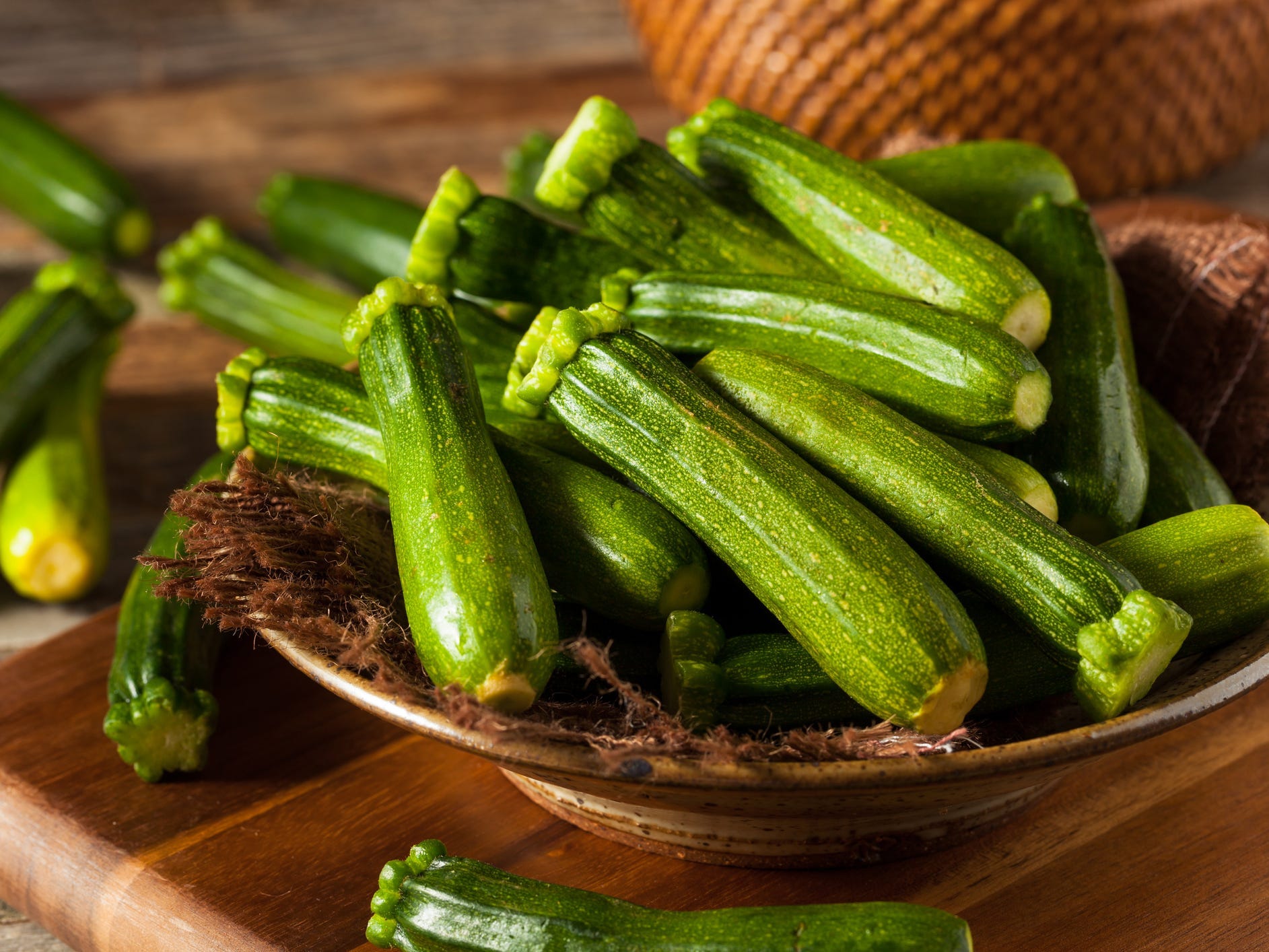
bhofack2/Getty Images
"Zucchini can be grown to a variety of sizes depending on the desired use," Zamler says. Baby zucchini is very tender and only needs to be lightly cooked before serving; a medium-sized zucchini is great sliced and roasted; and a larger zucchini is ideal for baking. Zucchini blossoms are also a delicacy in many countries, particularly Italy where they are stuffed with fresh ricotta and flash-fried.
Chayote
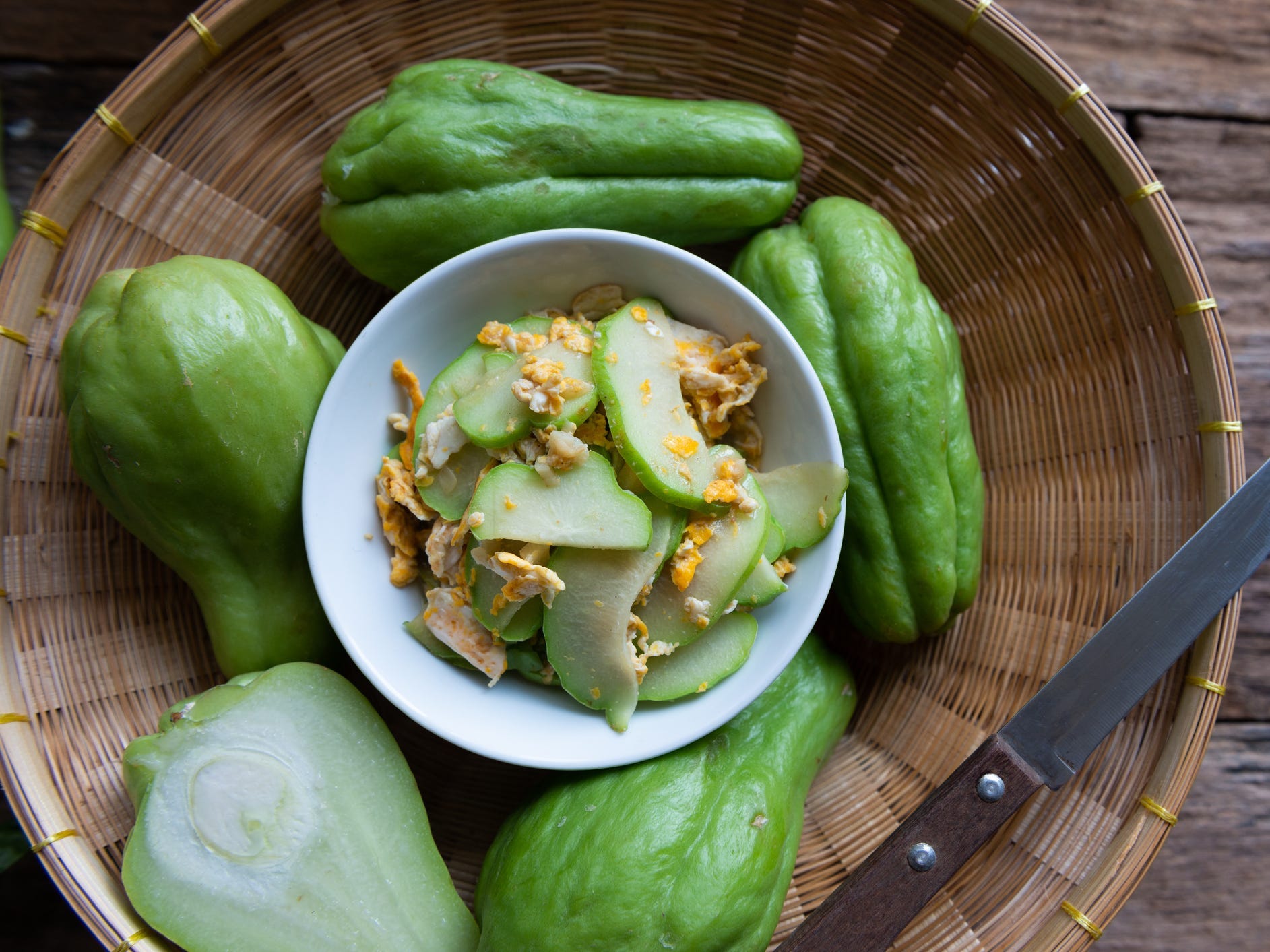
Teen00000/Getty Images
Chayote is grown throughout South America and is commonly used similarly to okra because of its starchiness. Eaten raw, its flesh will have a crisp crunch or it can be quickly sautéd to soften it up, much like a zucchini.
Patty pan squash
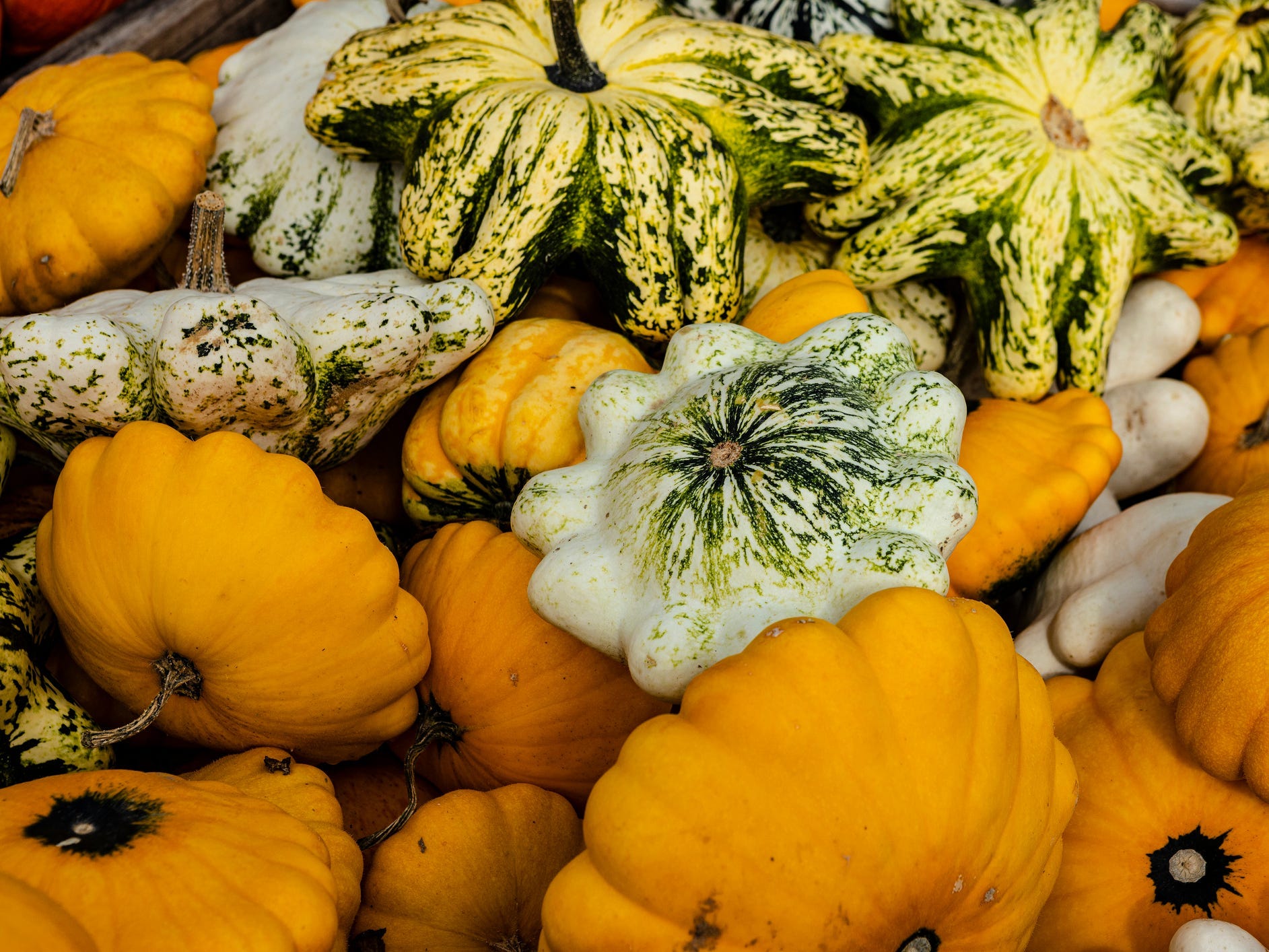
deraugenzeuge/Getty Images
"Patty pan squash are an interesting shape that make them nice to cook," Zamler says. They pack a more intense flavor than a traditional zucchini.
Cousa
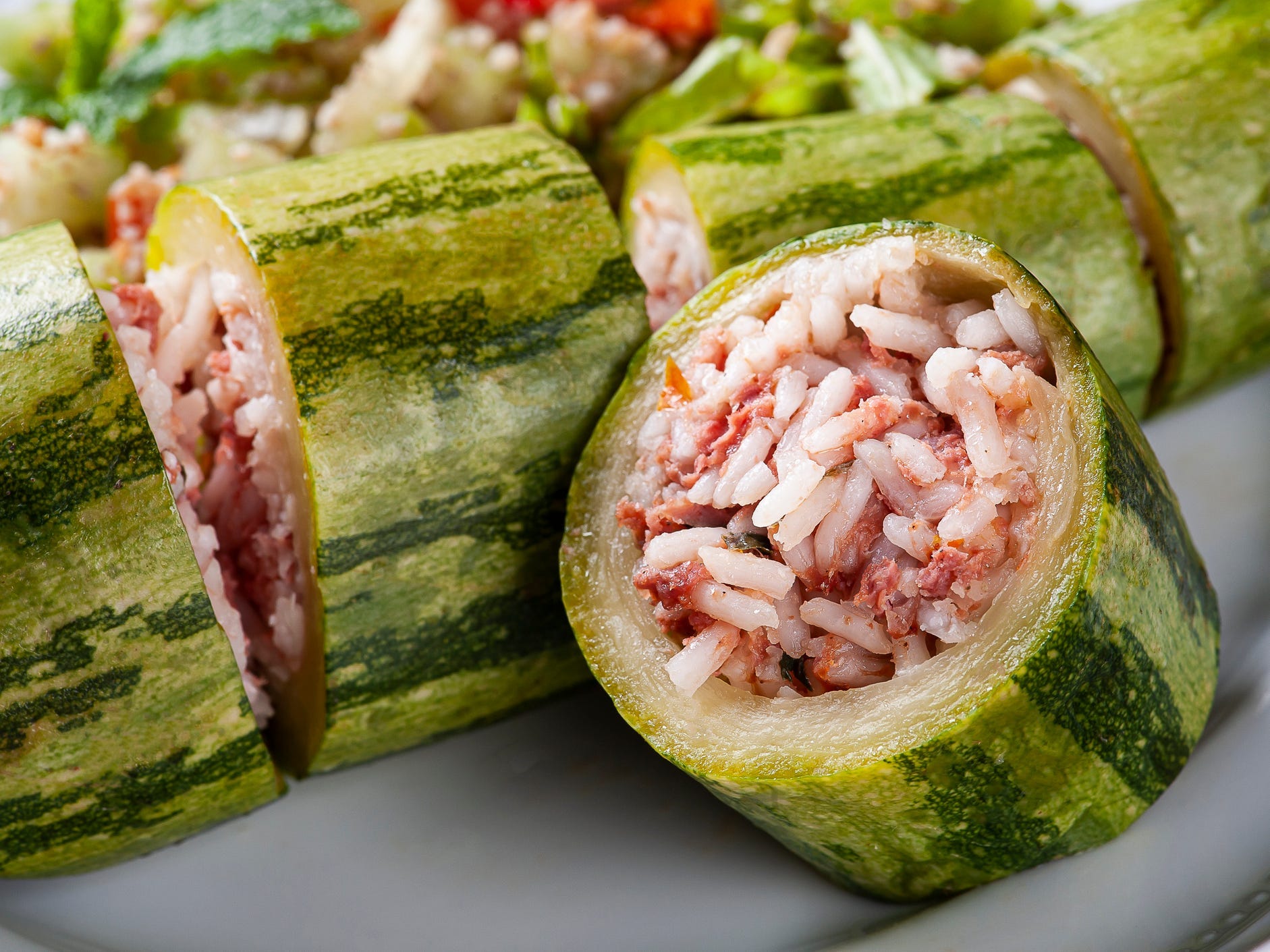
Flavia Novais/Getty Images
The cousa squash comes from the Middle East, so it is commonly eaten with hummus or roasted with garlic and other herbs. It's a hearty fruit that can stand up to other intense flavors but won't overpower any dish.
Tromboncino
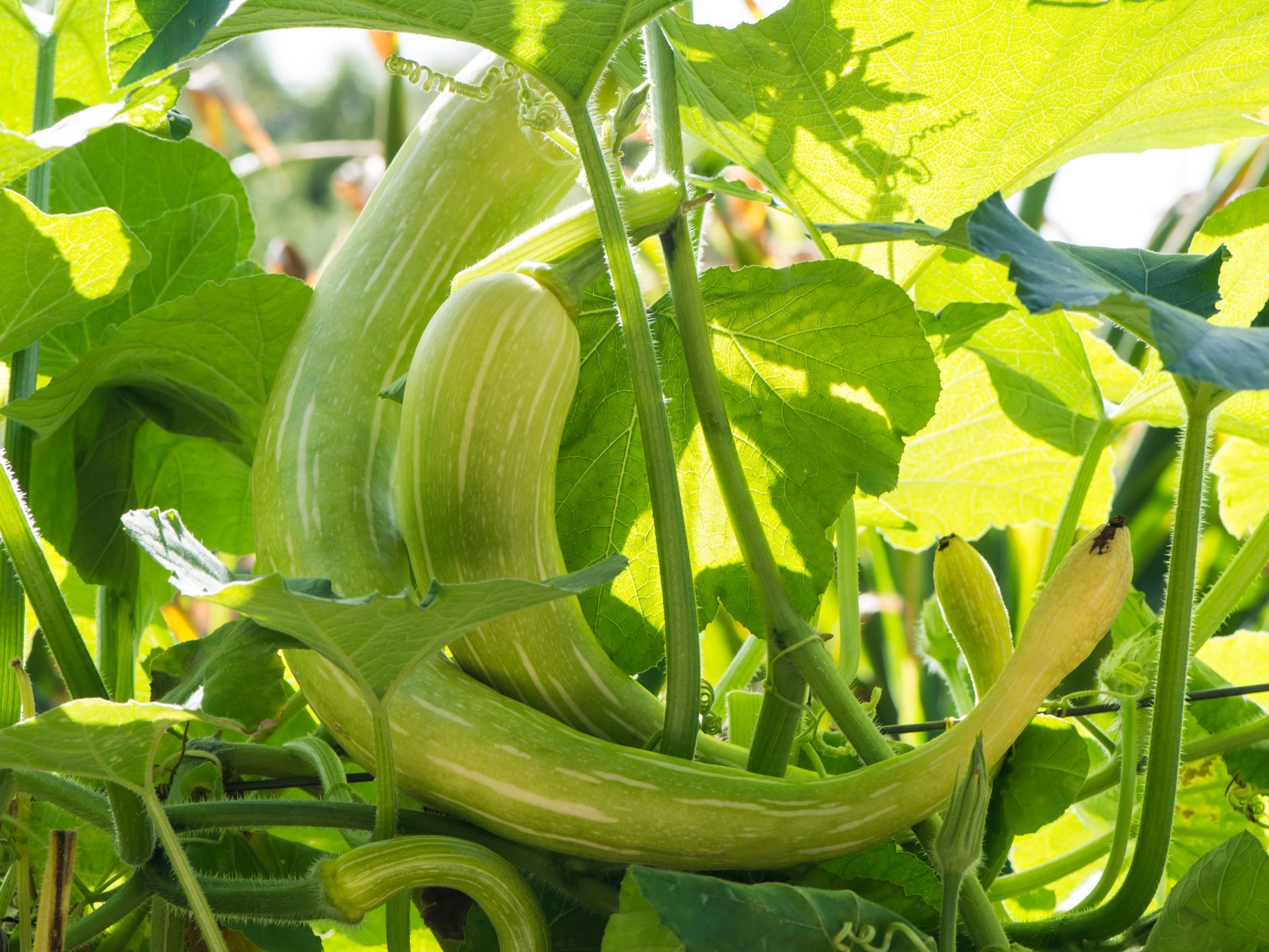
SharonWills/Getty Images
Tromboncino or zucchetta rampicante is an interesting squash because if it is left on the vine, it won't rot or keep growing. It will develop a harder skin that will then be able to tolerate colder temperatures. "After this point it's said to change flavor to that of a toned down butternut," Zamler says. If harvested when it's young and green, it cooks up like a sweet zucchini.
Luffa squash
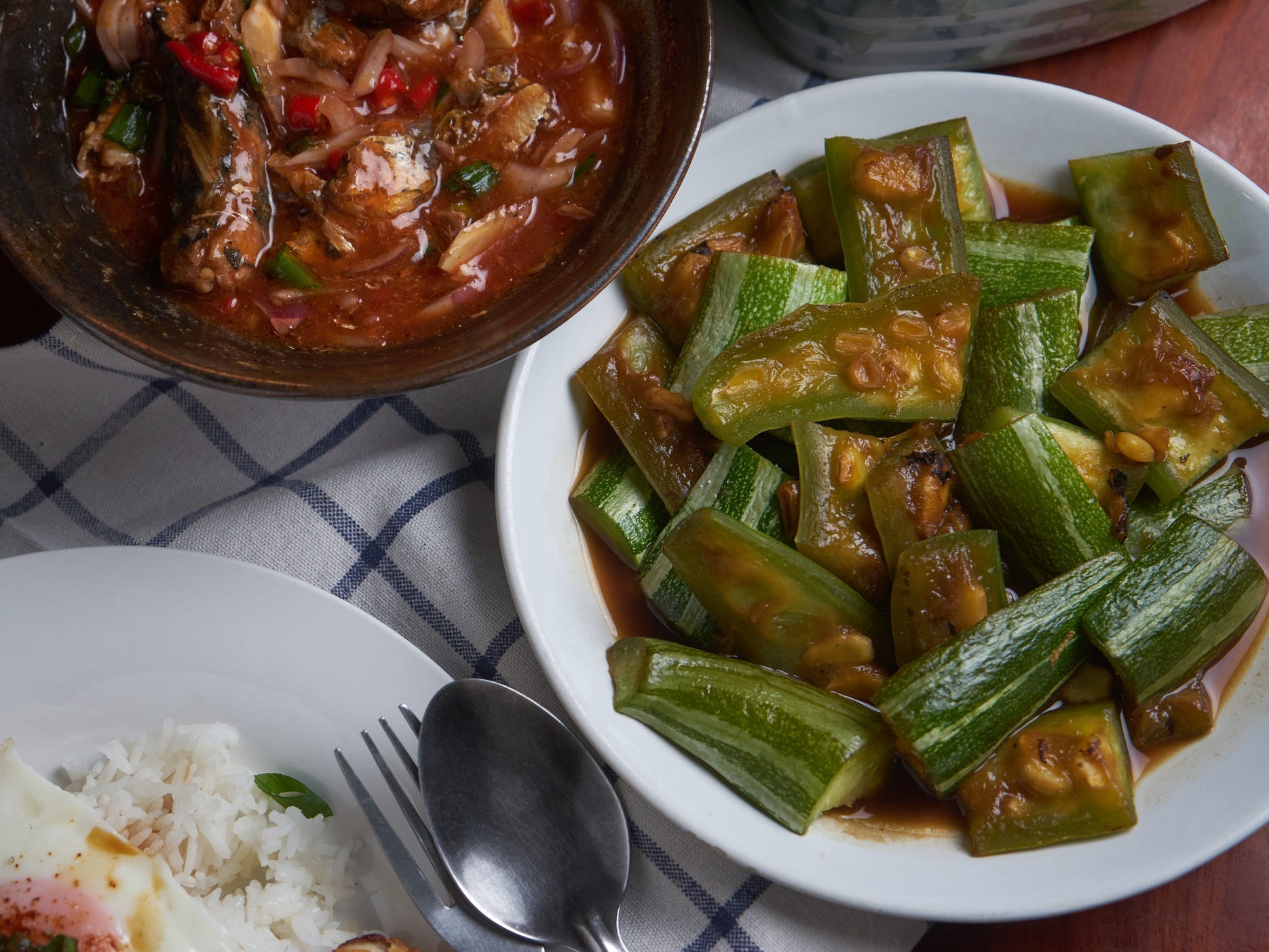
Krit of Studio OMG/Getty Images
Luffa squash must be harvested when it's young and green in order to be edible. It can be eaten raw, but it's better quickly sautéd into a stir fry. If left to mature on the vine, luffa squash become tough and inedible. At that point, they are harvested, dried, and turned into loofah sponges. Yes, really!
Crooked neck squash
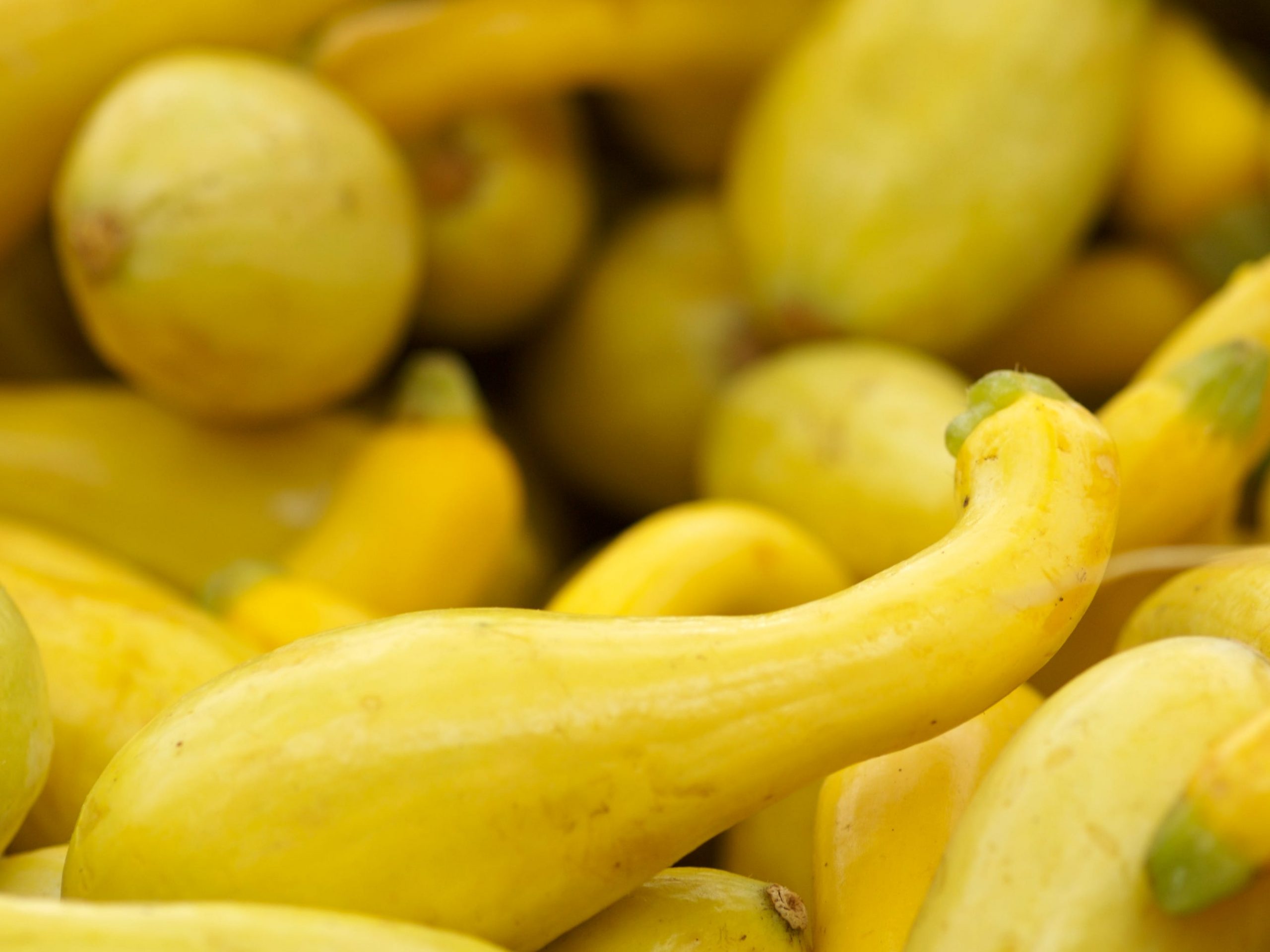
DMendel/Getty Images
Crooked neck squash is very similar in flavor to zucchini but grows a little larger and has bigger seeds that give the squash a more bitter taste when puréed.
Ball zucchini
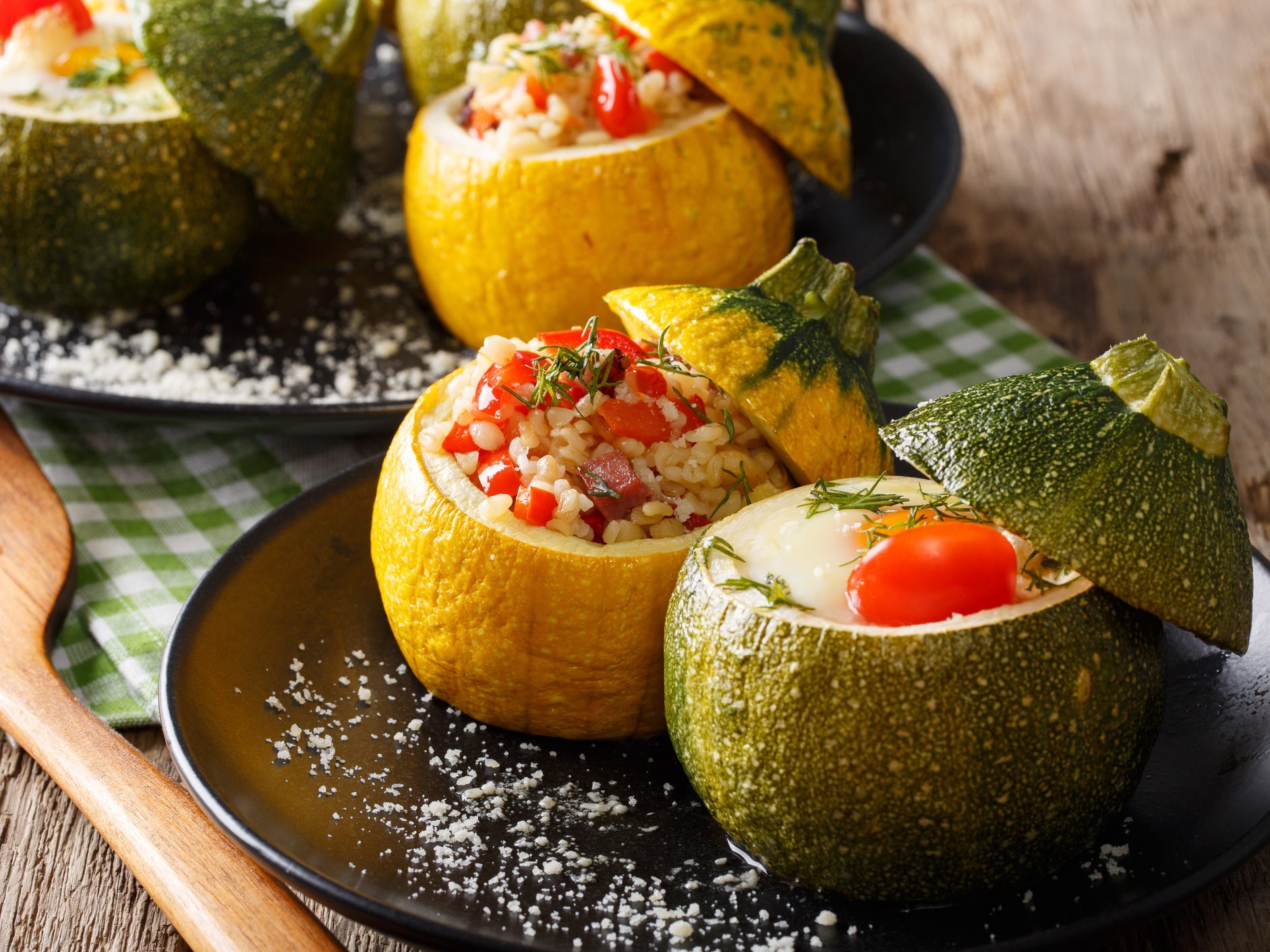
ALLEKO/Getty Images
Ball zucchini are a hybrid of zucchini and patty pan that creates a nice grenade-shaped zucchini, with a slightly more intense flavor.
Costata romanesco
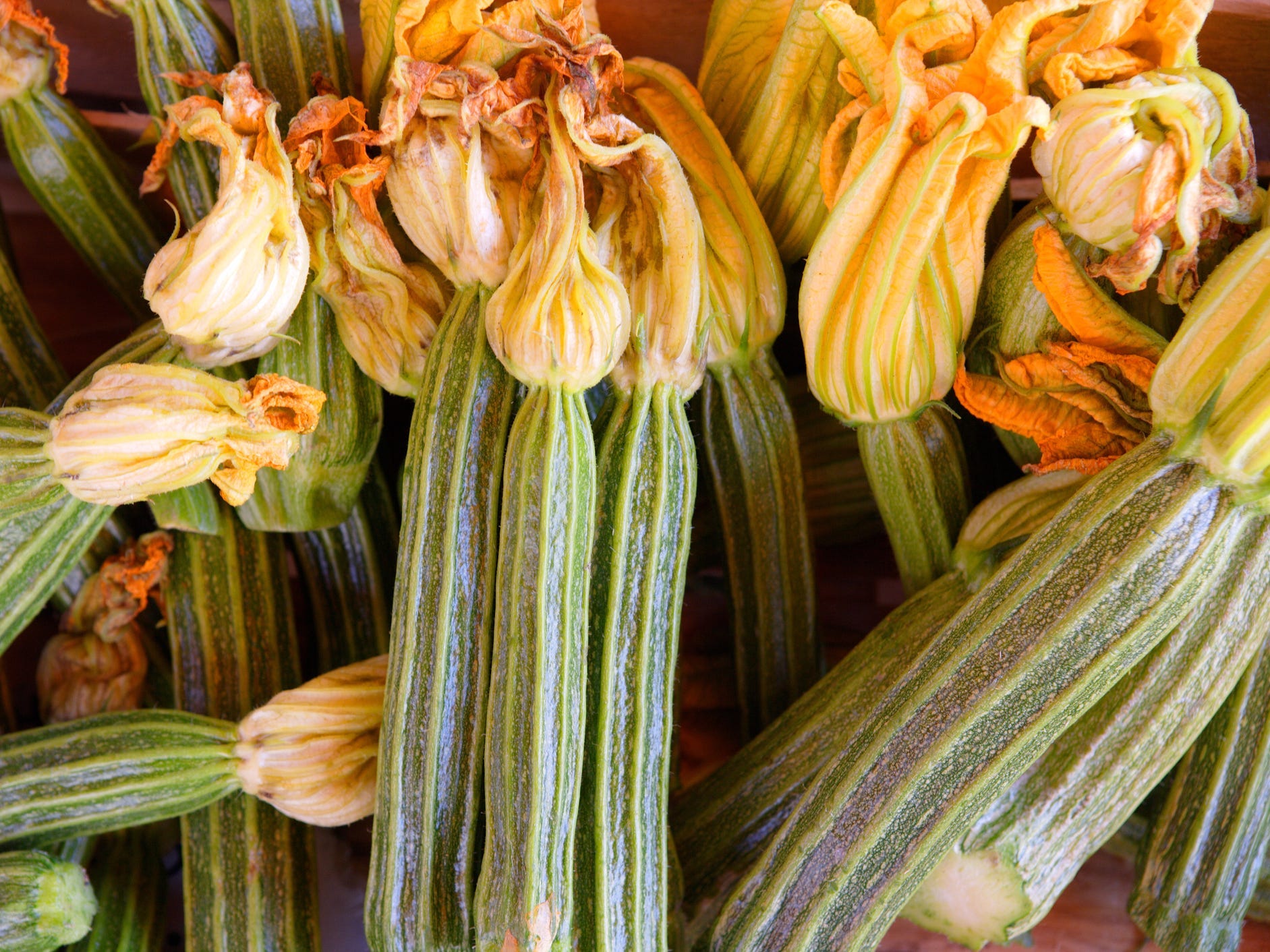
Franz Marc Frei/Getty Images
This squash is an heirloom variety that doesn't yield much fruit but produces a lot of male flowers that are used for stuffed squash blossoms. The fruit has an interesting star shape that makes it great for slicing and eating raw.
Insider's takeaway
There are so many different types of squash available all year round - from soft-skinned summer squashes to hard-shelled winter gourds. Most winter squashes have a sweeter, nuttier flavor and starchier texture than summer squashes. All can be delicious if you know how to prepare them. Some types of squash are better roasted or grilled, while others might be tastier puréed into a soup.
